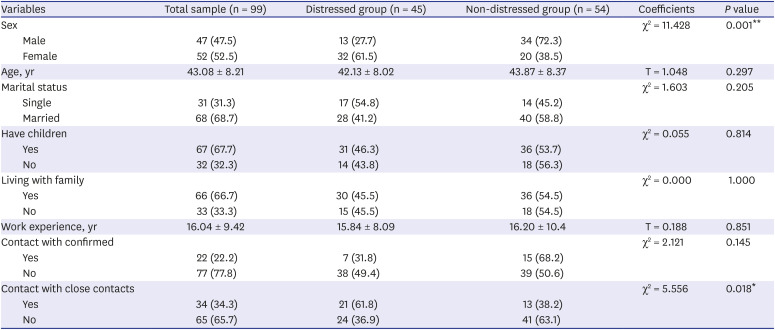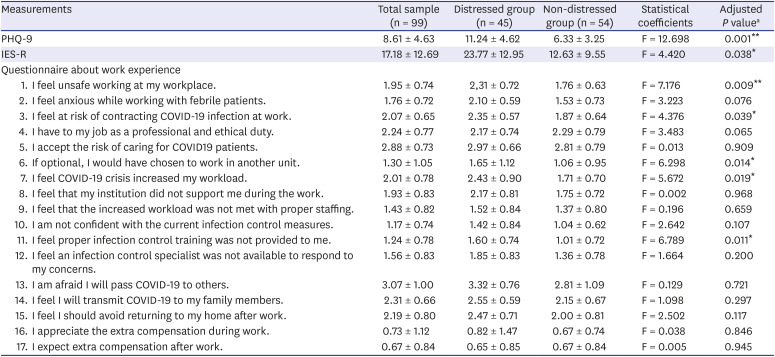1. Lai CC, Shih TP, Ko WC, Tang HJ, Hsueh PR. Severe acute respiratory syndrome coronavirus 2 (SARS-CoV-2) and coronavirus disease-2019 (COVID-19): The epidemic and the challenges. Int J Antimicrob Agents. 2020; 55(3):105924. PMID:
32081636.

4. Korean Society of Infectious Diseases and Korea Centers for Disease Control and Prevention. Analysis on 54 mortality cases of coronavirus disease 2019 in the Republic of Korea from January 19 to March 10, 2020. J Korean Med Sci. 2020; 35(12):e132. PMID:
32233161.
7. Yoon YK, Lee J, Kim SI, Peck KR. A Systematic narrative review of comprehensive preparedness strategies of healthcare resources for a large resurgence of COVID-19 nationally, with local or regional epidemics: present era and beyond. J Korean Med Sci. 2020; 35(44):e387. PMID:
33200593.

8. Korean Society of Infectious Diseases. Korean Society of Pediatric Infectious Diseases. Korean Society of Epidemiology. Korean Society for Antimicrobial Therapy. Korean Society for Healthcare-associated Infection Control and Prevention. Korea Centers for Disease Control and Prevention. Report on the epidemiological features of coronavirus disease 2019 (COVID-19) outbreak in the Republic of Korea from January 19 to March 2. J Korean Med Sci. 2020; 35(10):e112. PMID:
32174069.
9. Yoo JH. The fight against the 2019-nCoV outbreak: an arduous march has begun. J Korean Med Sci. 2020; 35(4):e56. PMID:
31997618.

10. Lee JY, Lee JY, Lee SH, Kim J, Park HY, Kim Y, et al. The experiences of health care workers during the COVID-19 pandemic in Korea: a qualitative study. J Korean Med Sci. 2021; 36(23):e170. PMID:
34128598.

11. Styra R, Hawryluck L, Robinson S, Kasapinovic S, Fones C, Gold WL. Impact on health care workers employed in high-risk areas during the Toronto SARS outbreak. J Psychosom Res. 2008; 64(2):177–183. PMID:
18222131.

12. Wu P, Fang Y, Guan Z, Fan B, Kong J, Yao Z, et al. The psychological impact of the SARS epidemic on hospital employees in China: exposure, risk perception, and altruistic acceptance of risk. Can J Psychiatry. 2009; 54(5):302–311. PMID:
19497162.

13. Hong X, Currier GW, Zhao X, Jiang Y, Zhou W, Wei J. Posttraumatic stress disorder in convalescent severe acute respiratory syndrome patients: a 4-year follow-up study. Gen Hosp Psychiatry. 2009; 31(6):546–554. PMID:
19892213.

14. Pappa S, Ntella V, Giannakas T, Giannakoulis VG, Papoutsi E, Katsaounou P. Prevalence of depression, anxiety, and insomnia among healthcare workers during the COVID-19 pandemic: a systematic review and meta-analysis. Brain Behav Immun. 2020; 88:901–907. PMID:
32437915.

15. Oladunjoye A, Oladunjoye O. An evolving problem-mental health symptoms among health care workers during COVID-19 pandemic. Asian J Psychiatr. 2020; 54:102257. PMID:
32634711.

16. Kontoangelos K, Economou M, Papageorgiou C. Mental health effects of COVID-19 pandemia: a review of clinical and psychological traits. Psychiatry Investig. 2020; 17(6):491–505.

17. Kang L, Li Y, Hu S, Chen M, Yang C, Yang BX, et al. The mental health of medical workers in Wuhan, China dealing with the 2019 novel coronavirus. Lancet Psychiatry. 2020; 7(3):e14. PMID:
32035030.

18. Mak IW, Chu CM, Pan PC, Yiu MG, Chan VL. Long-term psychiatric morbidities among SARS survivors. Gen Hosp Psychiatry. 2009; 31(4):318–326. PMID:
19555791.

19. Goldberg DP, Hillier VF. A scaled version of the General Health Questionnaire. Psychol Med. 1979; 9(1):139–145. PMID:
424481.

20. Goldberg D, Williams P. A User's Guide to the General Health Questionnaire. Windsor, UK: NFER-Nelson;1988.
21. Kim YJ, Cho MJ, Park S, Hong JP, Sohn JH, Bae JN, et al. The 12-item general health questionnaire as an effective mental health screening tool for general Korean adult population. Psychiatry Investig. 2013; 10(4):352–358.

22. Park JI, Kim YJ, Cho MJ. Factor structure of the 12-item General Health Questionnaire in the Korean general adult population. J Korean Neuropsychiatr Assoc. 2012; 51(4):178–184.

23. Spitzer RL, Kroenke K, Williams JB. Validation and utility of a self-report version of PRIME-MD: the PHQ primary care study. Primary Care Evaluation of Mental Disorders. Patient Health Questionnaire. JAMA. 1999; 282(18):1737–1744. PMID:
10568646.
24. Choi JH, Choi HS, Ko HJ, Park KH, Joo KJ, Ga H, et al. Standardization of the Korean version of Patient Health Questionnaire-9 as a screening instrument for major depressive disorder. Korean J Fam Med. 2007; 28(2):114–119.
25. Horowitz M, Wilner N, Alvarez W. Impact of Event Scale: a measure of subjective stress. Psychosom Med. 1979; 41(3):209–218. PMID:
472086.

26. Eun HJ, Kwon TW, Lee SM, Kim TH, Choi MR, Cho SJ. A study on reliability and validity of the Korean version of impact of event scale-revised. J Korean Neuropsychiatr Assoc. 2005; 44:303–310.
27. Lee SH, Juang YY, Su YJ, Lee HL, Lin YH, Chao CC. Facing SARS: psychological impacts on SARS team nurses and psychiatric services in a Taiwan general hospital. Gen Hosp Psychiatry. 2005; 27(5):352–358. PMID:
16168796.

28. Chong MY, Wang WC, Hsieh WC, Lee CY, Chiu NM, Yeh WC, et al. Psychological impact of severe acute respiratory syndrome on health workers in a tertiary hospital. Br J Psychiatry. 2004; 185(2):127–133. PMID:
15286063.

29. Lai J, Ma S, Wang Y, Cai Z, Hu J, Wei N, et al. Factors associated with mental health outcomes among health care workers exposed to coronavirus disease 2019. JAMA Netw Open. 2020; 3(3):e203976. PMID:
32202646.

30. Park C, Hwang JM, Jo S, Bae SJ, Sakong J. COVID-19 outbreak and its association with HCWs' emotional stress: a cross sectional study. J Korean Med Sci. 2020; 35(41):e372. PMID:
33107230.

31. Cabarkapa S, Nadjidai SE, Murgier J, Ng CH. The psychological impact of COVID-19 and other viral epidemics on frontline healthcare workers and ways to address it: a rapid systematic review. Brain Behav Immun Health. 2020; 8:100144. PMID:
32959031.

32. Lee SM, Kang WS, Cho AR, Kim T, Park JK. Psychological impact of the 2015 MERS outbreak on hospital workers and quarantined hemodialysis patients. Compr Psychiatry. 2018; 87:123–127. PMID:
30343247.

33. Pouralizadeh M, Bostani Z, Maroufizadeh S, Ghanbari A, Khoshbakht M, Alavi SA, et al. Anxiety and depression and the related factors in nurses of Guilan University of Medical Sciences hospitals during COVID-19: a web-based cross-sectional study. Int J Afr Nurs Sci. 2020; 13:100233. PMID:
32837911.

34. Elbay RY, Kurtulmuş A, Arpacıoğlu S, Karadere E. Depression, anxiety, stress levels of physicians and associated factors in Covid-19 pandemics. Psychiatry Res. 2020; 290:113130. PMID:
32497969.

35. Wang LQ, Zhang M, Liu GM, Nan SY, Li T, Xu L, et al. Psychological impact of coronavirus disease (2019) (COVID-19) epidemic on medical staff in different posts in China: a multicenter study. J Psychiatr Res. 2020; 129:198–205. PMID:
32763586.

36. Liu Y, Wang L, Chen L, Zhang X, Bao L, Shi Y. Mental health status of pediatric medical workers in China during the COVID-19 outbreak. Front Psychiatry. 2020; 11:702. PMID:
32792998.

37. Chung H, Kim EO, Kim SH, Jung J. Risk of COVID-19 transmission from infected outpatients to healthcare workers in an outpatient clinic. J Korean Med Sci. 2020; 35(50):e431. PMID:
33372425.

38. Nayak BS, Sahu PK, Ramsaroop K, Maharaj S, Mootoo W, Khan S, et al. Prevalence and factors associated with depression, anxiety and stress among healthcare workers of Trinidad and Tobago during COVID-19 pandemic: a cross-sectional study. BMJ Open. 2021; 11(4):e044397.

39. Afifi WA, Felix ED, Afifi TD. The impact of uncertainty and communal coping on mental health following natural disasters. Anxiety Stress Coping. 2012; 25(3):329–347. PMID:
21801075.

40. Gavin B, Hayden J, Adamis D, McNicholas F. Caring for the psychological well- being of healthcare professionals in the Covid-19 pandemic crisis. Ir Med J. 2020; 113(4):51. PMID:
32268045.
41. Person B, Sy F, Holton K, Govert B, Liang A. National Center for Inectious Diseases/SARS Community Outreach Team. Fear and stigma: the epidemic within the SARS outbreak. Emerg Infect Dis. 2004; 10(2):358–363. PMID:
15030713.

42. Zhong BL, Luo W, Li HM, Zhang QQ, Liu XG, Li WT, et al. Knowledge, attitudes, and practices towards COVID-19 among Chinese residents during the rapid rise period of the COVID-19 outbreak: a quick online cross-sectional survey. Int J Biol Sci. 2020; 16(10):1745–1752. PMID:
32226294.

43. Lee YR, Lee JY, Park IH, Kim M, Jhon M, Kim JW, et al. The relationships among media usage regarding COVID-19, knowledge about infection, and anxiety: structural model analysis. J Korean Med Sci. 2020; 35(48):e426. PMID:
33316862.

44. Shih FJ, Gau ML, Kao CC, Yang CY, Lin YS, Liao YC, et al. Dying and caring on the edge: Taiwan's surviving nurses' reflections on taking care of patients with severe acute respiratory syndrome. Appl Nurs Res. 2007; 20(4):171–180. PMID:
17996803.

45. Xiao H, Zhang Y, Kong D, Li S, Yang N. The effects of social support on sleep quality of medical staff treating patients with coronavirus disease 2019 (COVID-19) in January and February 2020 in China. Med Sci Monit. 2020; 26:e923549. PMID:
32132521.

46. Xiang YT, Yang Y, Li W, Zhang L, Zhang Q, Cheung T, et al. Timely mental health care for the 2019 novel coronavirus outbreak is urgently needed. Lancet Psychiatry. 2020; 7(3):228–229. PMID:
32032543.

47. Hu N, Mao H. Emergency management of mental hospitals during the outbreak of COVID-19. Psychiatry Investig. 2020; 17(5):489–490.

48. Tian Y, Nian B, Ma Y, Guo X, Wang F, Rong L. The status of occupational protection during COVID-19 pandemic: knowledge, attitudes, and practice of healthcare workers in endoscopy units, China. Front Public Health. 2021; 9:632608. PMID:
33829007.

49. Veenema TG, Walden B, Feinstein N, Williams JP. Factors affecting hospital-based nurses' willingness to respond to a radiation emergency. Disaster Med Public Health Prep. 2008; 2(4):224–229. PMID:
19050428.

50. Ogedegbe C, Nyirenda T, Delmoro G, Yamin E, Feldman J. Health care workers and disaster preparedness: barriers to and facilitators of willingness to respond. Int J Emerg Med. 2012; 5(1):29. PMID:
22716272.

51. Agaibi CE, Wilson JP. Trauma, PTSD, and resilience: a review of the literature. Trauma Violence Abuse. 2005; 6(3):195–216. PMID:
16237155.
52. Murray EJ, Mason M, Sparke V, Zimmerman PP. Factors influencing health care workers' willingness to respond to duty during infectious disease outbreaks and bioterrorist events: an integrative review. Prehosp Disaster Med. 2021; 36(3):321–337. PMID:
33618789.








 PDF
PDF Citation
Citation Print
Print




 XML Download
XML Download